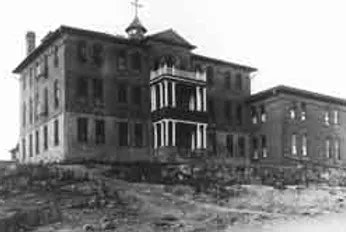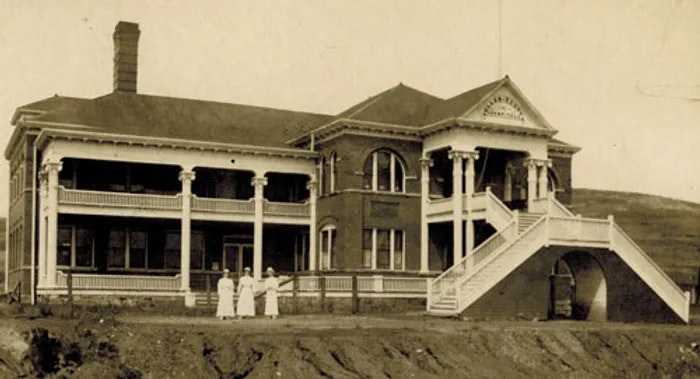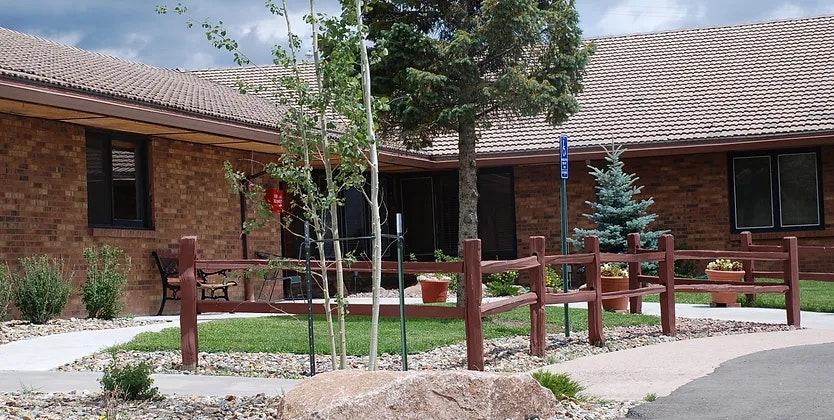Teller County History
As the last decade of the 1800's opened, what is now Teller County was then the western portion of El Paso County. Its County seat was Colorado Springs, a growing and prosperous western city located along the front range foothills at the eastern base of Pikes Peak.
On the southwestern side of Pikes Peak, the terrain offered mountainous ridges and rock formations, as well as grassy rangeland where a sparse population of ranchers raised their cattle.
In 1891, a ranch hand working on his family's land in the area discovered gold. That discovery changed the landscape of the area, both literally and figuratively, forever.
By the late 1890’s the area was covered with numerous small towns filled with miners and their families, as well as two large cities, Cripple Creek and Victor, that boasted populations in the tens of thousands.
A support system of government services, infrastructure, schools, and private sector businesses was built to service the mining industry and the visitors, workers and families of the burgeoning Cripple Creek Gold District.
Among these were critically needed medical services. Reportedly, as early as mid-1893, there were 80 doctors practicing in the new Gold District. They soon recognized the need for a full service hospital to meet the many serious health care needs of their patients.
As the core of professional business leadership in the Gold District, they organized efforts to recruit the Sisters of Mercy to open a hospital in Cripple Creek. In late 1893, Sister Claver Coleman arrived from Durango to open the District’s first hospital, and, on January 4, 1894, St. Nicholas Hospital opened in a donated house located at 326 E. Eaton.
Following two fires in April of 1896 that destroyed much of Cripple Creek, and with the population continuing to grow by the thousands, The Sisters of Mercy opened a new, modern hospital in May of 1898. It was located on the hilltop at 235 E. Eaton, just a block from its original location. Designed by Denver architect John Huddart, the 3-story brick hospital was “thoroughly modern, with electric lights, steam heat, hot and cold running water, and a state of the art surgery department.” It provided 18 beds for medical patients.

By that time, Cripple Creek was the third largest city in the State, and this southwestern portion of El Paso County had become an economic powerhouse, with financial influence around the globe.
It was time, local leadership felt, to take control of their own destiny; to break away from El Paso and form their own County. After much opposition from El Paso County authorities and members of the State legislature, on March 25, 1899, Teller County was officially formed from the western most portion of El Paso. Cripple Creek became the County Seat.
County officials then set about providing all of the services needed by their residents, including a new County hospital. Designed by noted architect C.E. Troutman, constructed in 1901, and opened in April 1902, the large two-story solid brick structure well represented the prosperity of the region. Like the smaller St. Nicholas Hospital it had all of the modern amenities including steam heat, sewer lines, electric lights, hot and cold running water, and all of the latest medical equipment.

During its period of prosperity, the County’s charity needs were provided through churches, lodges, unions, associations, the Salvation Army, and services generously funded by mining multi-millionaire Winfield Scott Stratton.
Eventually, as the District’s fortunes fell, the County Hospital became not only the center for the County’s medical services, but also a center for charity, welfare, and relief outreach, mostly funded by the County.
With a capacity of 34 to 40 patients, it became a place not only for medical treatment, but to also provide for the disabled and elderly residents needing long-term care.
In effect, it was the County’s first residential nursing home.
Records showed that in 1909 the hospital was home to 11 long-term residents, referred to as “permanent patients.” Among them was Elizabeth Yerrick, who entered the hospital in 1904 and lived there until her passing in 1919.
Created because of its booming gold mining economy, Teller County’s fortunes faded just as its gold mining did. By the mid-1900’s, population numbers were in the hundreds, rather than the tens of thousands.
In 1961, the Teller County Hospital closed its doors for good. Two years later, it was purchased and operated as a Bed and Breakfast hotel.
As for the smaller St. Nicholas Hospital, it had been purchased from the Sisters of Mercy by a local Doctor's group in 1924. After that, medical and hospital services continued to be offered there until 1960, when the building was reportedly sold to the County for $1. After that it was operated as a nursing home for area elderly and disabled under the name The Hilltop Nursing Home.
By 1972 it could no longer meet code and regulation requirements to remain open as a Nursing Home and was closed.
It was at this time that, as in 1893, a core group of local business leaders stepped in to again answer the need for residents’ medical services.
Their vision and determination led to the formation of The Southwest Teller County Hospital District in 1975, and the opening of the new Hilltop Nursing Home and Clinic in 1977.

